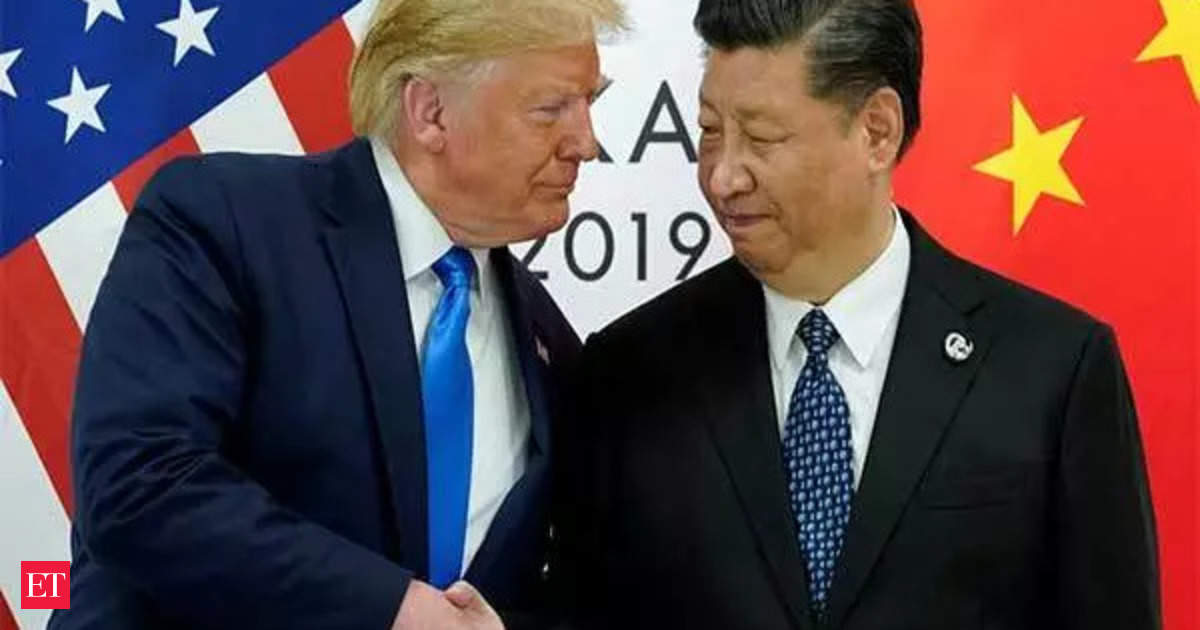China’s reaction — coming in the middle of a weeklong Lunar New Year holiday — was more muted, as was typical during Trump’s first term. The Commerce Ministry issued a statement expressing strong “dissatisfaction” and vowing “corresponding countermeasures,” without elaborating. It pledged to file a complaint at the World Trade Organization and called on the US to “manage differences on the basis of equality, mutual benefit and mutual respect.”
Also Read: Want a war, Don? Trump’s tariff barrage sets stage for global chaos
With Trump’s levies set to take effect just after midnight on Tuesday, Xi has a range of tools to respond beyond reciprocal tariffs. Options include export controls on critical minerals and market access restrictions to some American firms, according to Gary Ng, senior economist at Natixis SA. A series of laws passed since Trump’s first term give China greater sway over domestic business deals in the name of national security.Even so, the situation is also more complicated for China compared with the first trade war, both at home and abroad.
Unlike before, when China was his top target, Trump has now hit an ally with an even higher tariff — with more likely to come, including against the European Union. That gives China an opportunity to strengthen trade ties with other nations, and may help exporters retain a competitive advantage.
China’s domestic economy is also facing a more precarious situation. Bloomberg Economics estimates Trump’s initial levy could knock out 40% of Chinese goods exports to the US, jeopardizing 0.9% of China’s gross domestic product. Goldman Sachs Group Inc. said the additional 10% tariff would weigh on real GDP growth by 50 basis points this year, though noted that Trump’s action “is less severe than market participants and Chinese policymakers feared.”
“If Chinese policymakers were indeed preparing for worse, then they are likely to react in a restrained manner for the time being and to adjust course later if needed,” Goldman economists said in a note on Monday.
Exports have been doing the heavy lifting to drive growth as Xi’s government fuels manufacturing to offset a decline in the property sector. Even before the tariffs, economists expected more fiscal spending to offset deflationary pressure and ramp up consumer spending — and now it will be even more important for Beijing to step up.
China’s response to the tariffs will be mainly domestic, according to Larry Hu, head of China economics at Macquarie Group Ltd. He sees a growth target of “around 5%” this year, the same as in 2024, with authorities taking action to offset the US tariff hikes.
“We see the main theme for 2025 as a tug-of-war between tariffs and stimulus,” Hu said in an email. “If the economy continues to slow in the coming months, we could see another round of domestic stimulus in the second quarter.”
China typically only unleashes counter measures to foreign trade actions after tariffs become law, keeping open a brief window for closed-door negotiations. Both presidents pledged to keep both sides talking after a call last month, and Trump has made some comments suggesting he’s open to a wider deal with China, including a request for Xi to help end Russia’s war in Ukraine.
One sign of China’s policy reaction could be the strength of its next yuan fixing, Brad Setser, senior fellow at the Council on Foreign Relations and a former US Treasury official during Barack Obama’s presidency, wrote on X. Chinese markets have been closed over the new year holiday, with the country getting back to work on Wednesday.
Yuan Milestone
The yuan breached the psychological milestone of 7.3 per dollar for the first time since late 2023 last month, in a sign the government is potentially willing to let the currency devalue to benefit exports, even after the central bank spent months defending it.
Most of the increase from tariffs can be absorbed through exchange rates, Josh Lipsky, senior director of the GeoEconomics Center at the Atlantic Council, wrote in an email. “That’s one reason why Beijing’s rhetoric will be sharp, but its economic retaliation will potentially be more muted,” he said.
Trump’s executive order called on the Communist Party to leverage “the most sophisticated domestic surveillance network” in the world to stop criminal organizations facilitating the flow of illicit drugs. Exactly what that would entail wasn’t specified, giving Xi no obvious path to lifting the tariffs. China has already pledged to crack down on domestic chemical companies to stem the flow of fentanyl into the US and the source material used to make the deadly synthetic opioid.
With Commerce Secretary pick Howard Lutnick saying days ago that he wants the “highest” possible tariffs on China, Trump is likely just getting started. He floated tariffs on China of around 60% on the campaign trail, and already ordered an investigation into the nation’s compliance with a deal struck during Trump’s first trade war. That is due by April 1, and will likely find Beijing missed its commitment to buy $200 billion of US goods.
That so-called Phase One deal showed how far China could go politically, particularly when it came to US demands to change certain laws. At the same time, those negotiations showed China was careful to avoid hurting itself too much when hitting back.
“Politically, China needed to respond in some way,” Chang Shu and David Qu of Bloomberg Economics wrote in a report on Sunday. “The challenge will be to calibrate its actions to make its point while avoiding setting off an upward spiral of tit-for-tat moves that crush trade at a critical moment for China’s economic recovery.”


